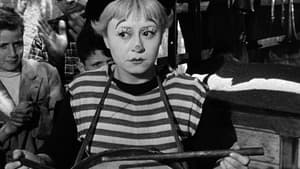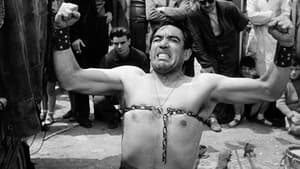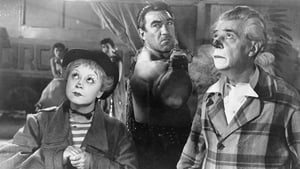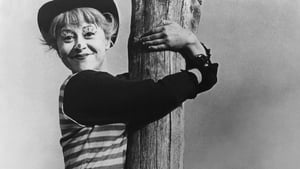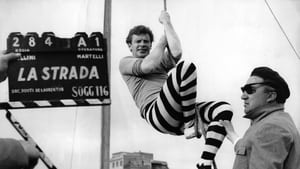Contact: info@alwanfilm.com
Video Sources 0 Views
- Watch trailer
- La Strada

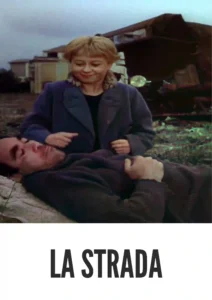
La Strada 1954 Colorized
Synopsis
Table of Contents
ToggleExploring Heartache: La Strada 1954 Colorized – An Early Colored Film Review

Introduction
La Strada 1954, a masterpiece directed by Federico Fellini, stands as a testament to the emotional depth and artistic brilliance of old films. As the film receives an early colored version, its significance in cinematic history is further accentuated. In this review, we delve into the impact of colorization on the viewing experience of La Strada 1954 and its enduring legacy.
Check The Full Colorized Movies List
Check Our Colorized Movies Trailer Channel
Understanding La Strada 1954 Colorized: Director, Cast, and Genre
La Strada 1954, crafted by Federico Fellini, embodies the essence of neorealism in cinema, depicting the struggles of marginalized individuals in post-war Italy. Anchored by the poignant performances of Anthony Quinn, Giulietta Masina, and Richard Basehart, the film transcends its genre, delving into themes of love, loss, and redemption with unparalleled authenticity and depth.
Exploring the World of La Strada 1954 Colorized Plot and Characters
Set against the backdrop of the Italian countryside, La Strada 1954 follows the journey of Gelsomina, a naive young woman sold by her impoverished mother to Zampanò, a brutish circus strongman. As Gelsomina is thrust into Zampanò’s tumultuous world, she grapples with her own sense of identity and purpose, forming an unlikely bond with the kind-hearted clown, Il Matto. Through their tumultuous relationship, La Strada 1954 explores themes of human connection, sacrifice, and the search for meaning in a world marked by suffering and despair.
The Art of Film Colorization
Film colorization, a contentious practice in the realm of cinema, has sparked debate among filmmakers and audiences alike. By adding color to black and white films, colorization aims to modernize classic movies and attract contemporary viewers. However, purists argue that colorization can compromise the artistic integrity of the original film, altering its mood and atmosphere. Despite these concerns, early colored versions of classic films offer audiences a fresh perspective on beloved favorites, inviting them to experience these cinematic treasures in a new light.
Early Colored Films: A Brief History
The history of early colored films is a testament to the evolution of cinematic technology and artistic innovation. From the earliest hand-tinted silent movies to digitally colorized classics, filmmakers have explored various techniques to add color to black and white films. While early colorization methods were often rudimentary, advances in technology have enabled the creation of vibrant and lifelike colors that enhance the visual experience for modern audiences. Today, early colored versions of classic films offer viewers a unique opportunity to revisit cinematic history through a contemporary lens.
La Strada 1954 and Its Early Colored Version
The decision to release La Strada 1954 in a colorized format has sparked both excitement and apprehension among cinephiles. While some welcome the opportunity to see the film in color, others express concern about tampering with a cinematic masterpiece. However, the early colored version of La Strada 1954 succeeds in preserving the film’s emotional depth and visual impact while introducing it to a new generation of viewers. By carefully selecting colors that complement the film’s evocative imagery and thematic resonance, the colorized version honors Fellini’s original vision while offering a fresh perspective on his timeless classic.
The Debate Over Film Colorization
The debate over film colorization has raged on for decades, with proponents and detractors arguing over its artistic merit and historical significance. Supporters of colorization contend that it breathes new life into classic films, making them more visually appealing and accessible to modern audiences. They also argue that colorization can enhance the viewing experience, adding depth and dimension to the film’s visuals. However, opponents of colorization assert that it can detract from the original artistic vision of the filmmaker and alter the intended look and feel of the film. They also express concerns about the potential for colorization to erase the historical record and disrespect the legacy of filmmakers who created their works in black and white.
Examining La Strada 1954 as an Early Colored Film
In analyzing La Strada 1954 as an early colored film, it’s essential to consider how colorization impacts the viewing experience. While purists may prefer the original black and white version for its timeless aesthetic, the early colored version offers a fresh perspective on Fellini’s evocative imagery and thematic resonance. By adding color to key scenes and enhancing the film’s visual impact, the colorized version invites viewers to immerse themselves in the world of La Strada 1954 in a new and engaging way. Ultimately, whether one prefers the black and white or colorized version of La Strada 1954 comes down to personal preference, but both versions offer a compelling and immersive cinematic experience.
Influence and Legacy: La Strada 1954 Colorized’s Impact on Cinema
La Strada 1954’s influence on cinema extends far beyond its initial release, inspiring filmmakers and audiences alike with its powerful storytelling and unforgettable performances. The film’s exploration of themes such as redemption, forgiveness, and the power of love has resonated with audiences for generations, cementing its status as a timeless classic. As one of the quintessential dramas of old films, La Strada 1954 continues to captivate and inspire viewers around the world, leaving an indelible mark on the history of cinema.
Director’s Cinematic Legacy: Beyond La Strada 1954 Colorized
Federico Fellini’s legacy as a filmmaker extends far beyond La Strada 1954, with a body of work that includes some of the most beloved films in cinematic history. From his early days as a screenwriter to his later career as a director, Fellini’s influence on local and international filmmaking is undeniable. His keen eye for detail, nuanced storytelling, and ability to evoke powerful emotions from his audience have earned him a place among the greats of cinema, ensuring that his legacy will endure for generations to come.
Themes Explored in La Strada 1954 Colorized
La Strada 1954 delves into a myriad of themes, including the complexities of human relationships, the struggle for redemption, and the power of forgiveness. Through its compelling narrative and rich character development, the film explores the darker aspects of human nature while offering a message of hope and resilience. Themes of love, loss, and the pursuit of truth resonate throughout the story, inviting viewers to reflect on their own lives and relationships.
Reception and Controversy Surrounding La Strada 1954 Colorized
Upon its release, La Strada 1954 received widespread critical acclaim for its powerful performances, compelling storytelling, and emotional depth. The film was praised for its realistic portrayal of the complexities of human relationships and its exploration of taboo subjects such as addiction and self-doubt. Despite sparking controversy, La Strada 1954 has come to be recognized as a classic of the drama genre, with its influence extending far beyond its initial release.
Where to Watch La Strada 1954 Colorized Online
For those eager to experience La Strada 1954 in its early colored version, the film is available on popular streaming platforms, offering viewers the opportunity to immerse themselves in the world of classic cinema from the comfort of their own homes. Whether seen in its original black and white format or in vibrant color, La Strada 1954 continues to captivate audiences with its gripping storytelling and powerful performances.
FAQs About La Strada 1954 Colorized
Q: Is La Strada 1954 based on a true story?
A: La Strada 1954 is a work of fiction, although it draws inspiration from real-life events and societal issues. Director Federico Fellini crafted a compelling narrative that explores the complexities of human relationships and the struggle for redemption, offering viewers a thought-provoking glimpse into the world of post-war Italy.
Q: What makes La Strada 1954 stand out from other films of its time?
A: La Strada 1954 stands out for its powerful performances, compelling storytelling, and emotional depth. Director Federico Fellini’s keen eye for detail and his ability to evoke powerful emotions from his audience set the film apart from other dramas of its time, making it a timeless classic that continues to resonate with audiences today.
Q: How does the early colored version of La Strada 1954 compare to the original black and white version?
A: The early colored version of La Strada 1954 offers a fresh perspective on the film’s visuals, adding depth and dimension to the story. By carefully selecting colors that complement the film’s emotional tone and dramatic themes, the colorized version preserves the mood and atmosphere of the original while introducing it to a new generation of viewers. However, some purists may prefer the original black and white version for its timeless aesthetic and artistic integrity.
Q: What was the critical reception of La Strada 1954 upon its release?
A: La Strada 1954 received widespread critical acclaim for its powerful performances, compelling storytelling, and emotional depth. The film was praised for its realistic portrayal of the complexities of human relationships and its exploration of taboo subjects such as addiction and self-doubt. Despite sparking controversy, La Strada 1954 has come to be recognized as a classic of the drama genre, with its influence extending far beyond its initial release.
Q: Who was involved in the production of La Strada 1954?
A: La Strada 1954 was directed by Federico Fellini, who brought his unique vision and sensibility to the film. The cast included Anthony Quinn, Giulietta Masina, and Richard Basehart, whose performances earned widespread acclaim. Together, they created a cinematic masterpiece that continues to captivate and inspire audiences around the world.
Conclusion
In conclusion, La Strada 1954 remains a timeless classic of old films, captivating audiences with its powerful storytelling and unforgettable performances. Whether seen in its original black and white format or in vibrant color, the film continues to resonate with viewers, offering a poignant exploration of love, loss, and the human spirit. As audiences rediscover La Strada 1954 in its early colored version, they are reminded of the enduring legacy of Federico Fellini and the timeless appeal of classic cinema.


